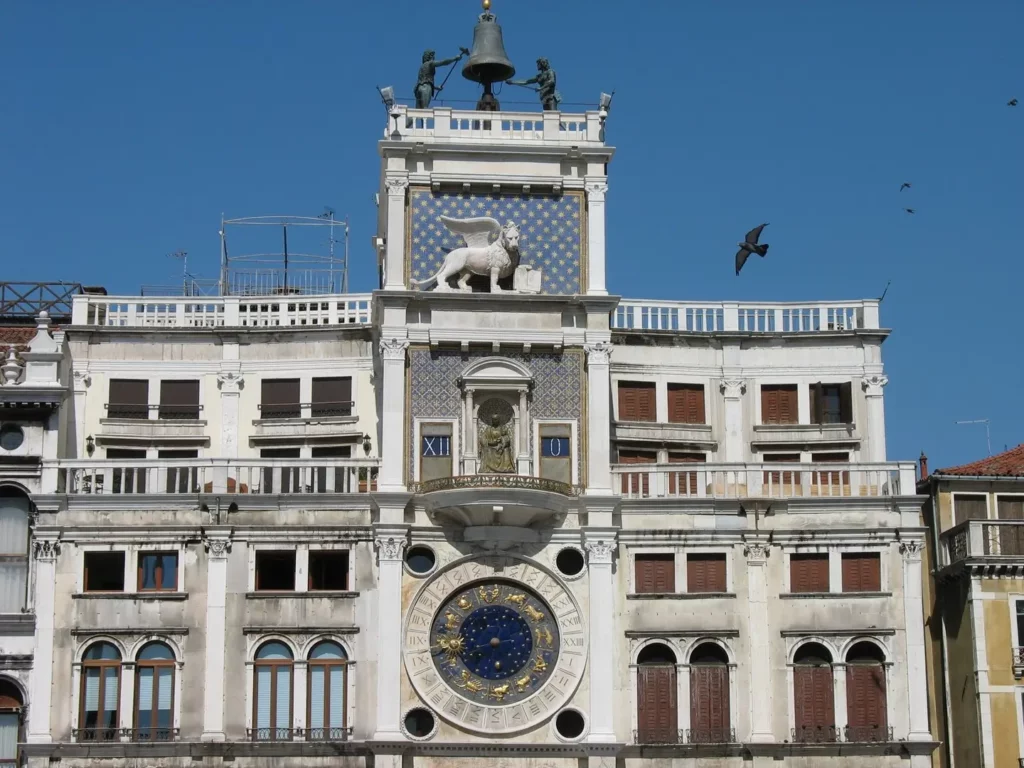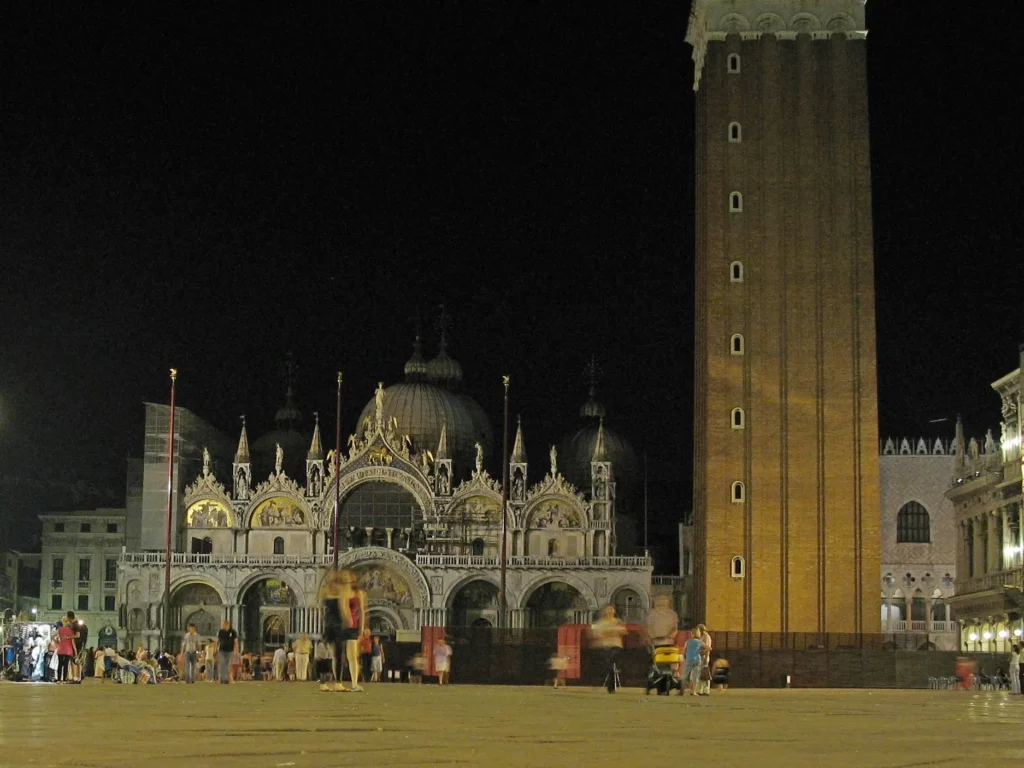Last Updated on 06/05/2023
So, you are ready for everything, after reading part 1 Venice Tips, armed with a map of the city and water transport, water and sandwiches. Let’s go. Our first destination is naturally San Marco.
Venice tips. How to get to Venice, Venice museums
In the third – the Grand Canal and around the city, a map, a regatta.
Fourth – lagoon and islands
Read about Lido di Jesolo as a place of accommodation here.
Map of attraction of the region
What to see in Padua
Around Venice. Villa Pisani and other Brenta Villas
Euganean Hills. What to visit
Mandatory program – what to see in Venice in one day
Venice for a one-day tourist consist of four mandatory points:
- St. Mark’s Square and Cathedral,
- boat trip along the Grand Canal,
- Bridge of Sighs
- and the Rialto bridge
The fifth point depends on the possibility to spend money – a gondola ride (from about 60 (half an hour) to 100 (50 min) euros per trip, takes up to 6 people, you can arrange with other tourists).
If you are with a group and you have limited time, start with San Marco. If you are your own boss, then San Marco can be perfectly viewed later, then there will be significantly fewer people (don’t forget to check opening time).
Venice Bridge of Sighs
There are a lot of people and bridges on the way to Piazza San Marco, but one bridge in front of the Doge’s Palace is packed especially tightly – from here the Bridge of Sighs is photographed.


The Bridge of Sighs (Ponte dei Sospiri, 17th century) is divided in half: in one direction the criminals were led to the prison, in the other – to execution, and on the way they sighed, hence the name of the bridge. If you visit the Doge’s Palace, you will have the opportunity to walk across the Bridge of Sighs from the inside.

Doge’s palace
First Doge’s palace (Palazzo Ducale) was built before 1000 (from the end of the 9th century the Doges decided, that their residence must be here), on the basis of the Roman walls. This building was destroyed by fire. The modern building was built in the 14th – early 15th century.

In the courtyard there is the main staircase of the Giants (late 15th century) with the statues of Mars and Neptune sculpted by Sansovino and his students. At the top of the stairs, the doge’s coronation ceremony was performed.

I think it should be Mars


The stairs lead to the gallery. Gallery overlooking Piazzetta San Marco offers a wonderful view of the lagoon and the cathedral. The jaws of lions in the gallery – original mailboxes for letters and denunciations.

Golden Staircase (Scala d’Oro, mid-16th century, project by Sansovino) leads inside the palace. The staircase, shining with gilding, was intended for important guests and dignitaries.

In the halls of the palace you can see the paintings of Tintoretto, Carpaccio, Titian, Veronese. Most of the halls are interesting namely for the painting and carved wooden ceilings, and not for pieces of furniture or some kind of interior decoration (there is no furniture in most halls). In addition to the halls that served for various state needs, you can see the arsenal, walk across the Bridge of Sighs to the prison.
Opposite the Doge’s palace is the library of St. Marco by Sansovino (16th century). These two buildings flank the piazzetta of San Marco is a kind of hallway leading to San Marco.
There are columns on both sides of the embankment – on one of them there are St. Theodore (revered saint in Venice), on another winged lion – the symbol of Venice. The criminals were executed between the columns.

Bell tower
The bell tower (Campanile di San Marco), towering over the square, was once erected on a Roman foundation in the 9th century. But in 1902 it collapsed. At the base of the bell tower is the Sansovino lodge. It was also destroyed, but it was reconstructed in the same form in 1912. You can climb the bell tower – it has a lift.



San Marco place
Finally we find ourselves on the square of San Marco (Piazza San Marco). Of all the Venetian squares, only this one is called Piаzza, which emphasizes its beauty and significance, the rest are called campo (larger in size) or campiello (respectively, smaller).

At the entrance to the square in front of you is the Clock Tower (Torre dell’Orologio). It was built in the late 15th – early 16th century.
The clock was installed in the 15th century. They indicate the changing seasons, the passage of the sun in the signs of the zodiac, the time and phases of the moon. The time-beating Moors on the tower were cast in 1497.
The tower can be visited with a guided tour in Italian, English or French.


Follow me
Basilica of Saint Mark
Basilica di San Marco – a cathedral, unique in its kind, the quintessence of the wealth and power of the Venetian Republic.
The cathedral was built on the model of the Byzantine basilicas in 829 to store the relics of the evangelist St. Mark, which were brought by the Venetian merchants from Alexandria under the pork carcasses to save them from the Muslims. Destroyed by a fire in 927, the building was rebuilt in the middle of the 11th century. The bas-reliefs on the façade date back to the 12th century, the oldest mosaics from the 13th century.
Quadriga (four horses) above is attributed to the ancient sculptor Lysippos, 4th century BC and was transported from Constantinople, as were the doors of the central portal (6th century). The external decoration was completed by the end of the 15th century.


So you see, that the cathedral as a whole and its individual parts are extremely valuable, and it will not be easy to walk around it. A dense flow of tourists follows one route. To have at least some view between the heads of visitors, choose an unpopular time whenever possible (morning or the last hour before closing).
From the inside, the basilica is literally golden. The glasses for the mosaics were made on the island of Murano and laid out against a background of gold foil. Mosaics began to be created in 1071 and continued until the end of the 13th century. The total mosaic area is about 4000 square meters.
Inside there are many relics that ended up in Venice after the plundering of Constantinople in 1204, including an icon from the 10th century “Madonna Nicopeia”. The marble floor was created in the 12-15th centuries.
As in Byzantine churches, the altar is separated from the main part by a partition. For a fee, you can see the Golden Altar (Pala d’Oro). The altar is about 250 miniatures made in the technique of cloisonné enamel in the 10th-12th centuries. The upper part was taken out of Constantinople, the lower part was ordered later from the Byzantine masters. Nice, but very small, it’s easier to look at the photos.
There is a treasury at the cathedral (entrance from the south). Presented are church utensils brought from the East or donated by the popes. There is also a museum (exhibits related to the history of mosaics, including fragments of early mosaics, a collection of precious fabrics, icons).




Procuratie
The similar buildings surrounding the square are the Old (Procuratie Vecchie) and New (Procuratie Nuove) Procurations. The old ones were built in the late 15th – early 16th century. New ones – started at the end of the 16th century.
Procurations served as a place of work and housing for the procurators of the cathedral. Procurator of the Cathedral of St. Mark is an honorary position. They monitored the construction and expenditure of the treasury, the Doge was chosen from 12 procurators.
Now part of the Procuration is occupied by the Archaeological Museum and the Correr Museum.
In the first part, read about difficulties and museums.
In the third – the Grand Canal and around the city, a map, a regatta.
Fourth – lagoon and islands
Read about Lido di Jesolo as a place of accommodation here.
Map of attraction of the region
Do you enjoy the site without cookies? This means that I work for you at my own expense.
Perhaps you would like to support my work here.
Or change your cookie settings here. I don’t use personalized ads






